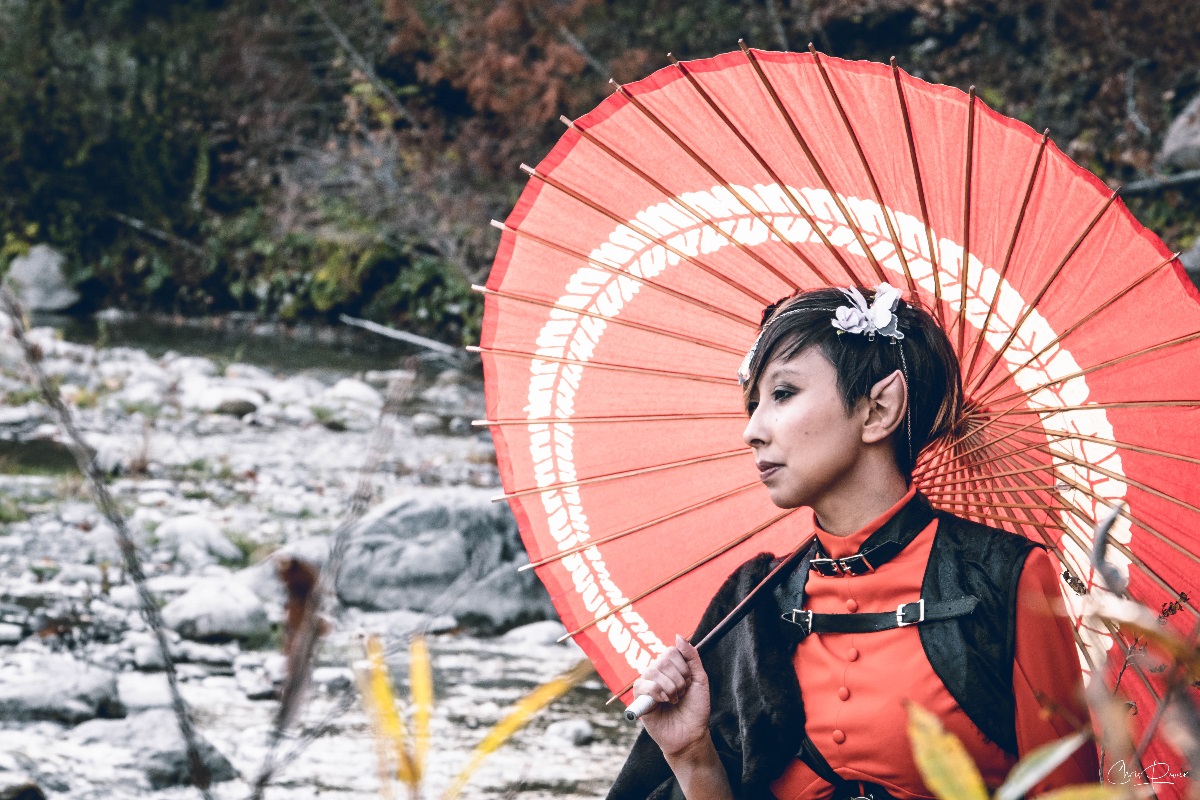High Elves
Like all their Thalan cousins, High Elves, known to themselves as the Deminis’Thalan, are a long lived race. Artistically and magically inclined, they migrated west following the humans after the sundering of the elven races and established their homeland, the now-floating city of Suvant. Though some High Elves live as a minority group in other kingdoms, Suvant, and its colony island of Day’ten, represent the highest concentration of High Elves on the continent. They are equally at home living in comfortable elven cities or secluded forest villages.
Though graceful and wise, High Elves are viewed by others as a condescending and arrogant people, often causing friction when interacting with other races through ‘unintentional’ slights. Worship of Ll’yandra is most common among the High Elves, but with few exceptions all are free to worship as they will in their cities and villages.
Language: French
Life Expectancy: 700 to 1000 years
| Child | 1 – 15 |
| Teenager | 16 – 20 |
| Young Adult | 21 – 50 |
| Mature | 51 – 100 |
| Middle Age | 101 – 400 |
| Old | 400 + |
History
After the sundering of the Elven Races, the elves that came to be High Elves saw in the humans a willfulness and tenacity that they found intriguing, and followed them on their migration westward. Believing then that the humans would come to be a dominant power, and understanding that at the core of their potential lay their passion for accomplishment within their short lifespans, they settled their first kingdom, Suvant, near predominantly human lands. In old folklore, it is said that during this migration, the High Elves assisted Kael, or Kaelyn as they called him, in guiding his tribe of people. Some ancient texts surviving from the period have given scholars doubts as to Kael’s humanity, with a small faction believing him to have been a High Elf the whole time.
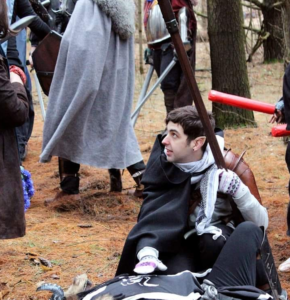 Suvant and the High Elves therein did not pursue an expansionist policy and lived peacefully with their neighbours and the forests around them until the disappearance of the Grey Elves, when their great kingdom disappeared as well – structures and all. This event marked a turning point for the High Elves, as their ties to the forest and the mortal plane began to weaken. Many of the remaining scattered High Elves of the continent returned home and founded Day’ten, near the site of Suvant’s disappearance, hoping for answers. Eventually Suvant returned, in the year 2250, as a floating city held high by the High Elves’ powerful magic – now above the island of Day’ten, which was brought into the kingdom. Reasons for the disappearance of Suvant were not given by the rulers of Suvant and for many scholars it remains a mystery to this day.
Suvant and the High Elves therein did not pursue an expansionist policy and lived peacefully with their neighbours and the forests around them until the disappearance of the Grey Elves, when their great kingdom disappeared as well – structures and all. This event marked a turning point for the High Elves, as their ties to the forest and the mortal plane began to weaken. Many of the remaining scattered High Elves of the continent returned home and founded Day’ten, near the site of Suvant’s disappearance, hoping for answers. Eventually Suvant returned, in the year 2250, as a floating city held high by the High Elves’ powerful magic – now above the island of Day’ten, which was brought into the kingdom. Reasons for the disappearance of Suvant were not given by the rulers of Suvant and for many scholars it remains a mystery to this day.
Geography
Though the human kingdoms of Duvain, Berphaunt, and Tiefanue can all claim that 5-10% of their population is High Elven, most live in the city of Suvant or the island colony of Day’ten. A few small villages are found on the mainland, in the areas bordering the Grey Elven woods. High Elves enjoy the comforts of civilization, but prefer to do so in a setting that is surrounded by and interwoven with nature, especially forests. As such, they tend to be less represented in major human cities and the underground abodes of other races.
Because of their central location on the continent, and the well established port town of Tourquet, they are frequently engaged with other kingdoms both politically and economically. Day’ten produces a number of goods for trade, including prized coffee beans, which are purchased by merchants continent-wide.
Geography has also affected the High Elves politically. The recent expansion of Styphon’s forces and the fact of bordering Duvain have led to a very neutral political stance in the kingdom of Suvant despite polarized opinions elsewhere on the continent, as the High Elves strive to achieve a long term peace for their people.
Culture
As a product of being a long-lived race, High Elven culture changes quite slowly. Viewing themselves as one of the penultimate civilized races on the continent, High Elves pride themselves on apparel and accommodations that let other High Elves, and even other races, know their social status and wealth almost immediately. It would not be out of place for even middle-to-lower-class High Elves to make sure to own a set of tailored, embroidered formal wear for guests or formal occasions.
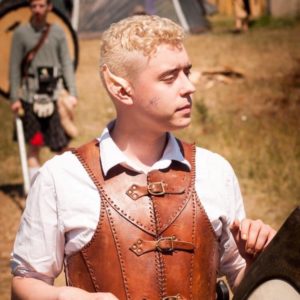
High Elves also pride themselves on their ability to live in harmony with nature. Unlike Wild Elves, who revere nature as Gaia, a maternal god-force, High Elves admire the beauty of nature, considering it an unrivalled aesthetic, and one that is emulated frequently in their statues, poems, clothing, and even their tools of war – swords, leathers, etc.
Unlike other races with powerful noble houses, a High Elf’s path is not set in stone from birth. Although the proper respect and acknowledgement of rank and social standing is paramount for the people of Suvant, there are very few titles and there is a very relaxed system of government. Houses of nobility often adopt young High Elves who show promise into their families, with emphasis on artisans and craftsfolk. Those artisans who choose not to join noble houses still enjoy greater status for themselves and their families.
The pursuit of magical knowledge is also widely sought after, and Suvantian magi are considered some of the best in the world, rivalling even Berphaunt’s Mage’s Guild, the Conclave. Many in Suvant claim that magic is a High Elf’s birthright, and most citizens, even poor folk and peasants on Day’ten, have received some formal instruction in the magical arts.
The majority of religious High Elves follow the path of Ll’yandra. Most High Elves strive to maintain good relations with other elven races, even Dark Elves and Ice Elves, when they can. Following the path of the dragons, especially of the ocean dragon Physignathus, is also somewhat popular, especially in the coastal city of Day’ten.
Marriage
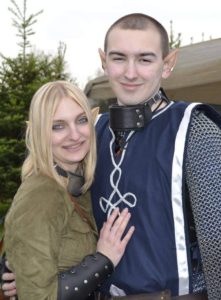 High Elven marriages are usually a grand affair, consisting of an intricately planned celebration by the two families. Food, music and festivities are present at the wedding reception, and all of great quality. Mainland High Elven grooms tend to present their brides with a wedding band with an emerald, symbolizing the Green Shard that resides within all Thalan souls. Suvantian grooms usually go one step further, with an emerald green sash or silken glove. A Priest of Ll’yandra often performs the service, though depending on the beliefs of the couple, accounts of Dragon Knights or speakers of Physignathus sanctioning a union are not uncommon in the floating city.
High Elven marriages are usually a grand affair, consisting of an intricately planned celebration by the two families. Food, music and festivities are present at the wedding reception, and all of great quality. Mainland High Elven grooms tend to present their brides with a wedding band with an emerald, symbolizing the Green Shard that resides within all Thalan souls. Suvantian grooms usually go one step further, with an emerald green sash or silken glove. A Priest of Ll’yandra often performs the service, though depending on the beliefs of the couple, accounts of Dragon Knights or speakers of Physignathus sanctioning a union are not uncommon in the floating city.
Funeral Rites
Upon the death of a High Elf, the immediate family and friends of the deceased prepare a special coffin. The coffin is made from handcrafted oak, with a larger stone coffin to encase it. The body is not burned, but instead clothed in fineries with a screen of white lace or silk. The wooden coffin symbolises their return to nature and Ll’yandra’s garden. The stone coffin is meant to protect the corpse from potential necromancy by keeping the body sealed within the heavy rock casing. A Priest of Ll’yandra will say a few words with the hope of having the High Elf’s Green Shard return to the Mother safely. The body is then lowered into the twin coffins and into the earth.
The Mortigeist
As every elf knows, the eve of the Hallows brings forth the devilish creature known as the Mortigeist. Said to be Ll’yandra’s first sentient creation, the Mortigeist’s envy and hatred of Thalan races knows no bounds or limit. The Mortigeist dwells within the corner of Hell called the Mizzer’baugh and acts as ruler of all the terrors that reside there. It is released once a year to satisfy its need for Thalan flesh. While Suvantians enjoy the protection of the floating city, the High Elves of Day’ten prepare every Hallows for the creature’s eventual arrival. It is impervious to all forms to harm, save for those inflicted by a female elf. While the Mortigeist hunts all forms of elves, High Elves fear the creature the most, taking great caution to ready themselves when it emerges from the infernal depths.
The Legend of the Three Tears
Legend states the Goddess and Mother of the Elves has but three tears to shed. The following scriptures details this prophetic tale:
 “The first tear was shed out of joy. Joy for the miracle of her finest creation. It fell when she had given birth to the Thalan, her only mortal children. When the first tear fell it hit the earth and shattered. The pieces from the tear became that which gave the elves their eternal life; the Green Shards. That which finished what Icarus and Bahamut, her second and third sons, had started.”
“The first tear was shed out of joy. Joy for the miracle of her finest creation. It fell when she had given birth to the Thalan, her only mortal children. When the first tear fell it hit the earth and shattered. The pieces from the tear became that which gave the elves their eternal life; the Green Shards. That which finished what Icarus and Bahamut, her second and third sons, had started.”
The Shard goes on even after the elf has passed on, carrying with it the experience and soul. Each elf it is placed into carries within them a hidden memory of what was before, and thereby a touch of wisdom beneath the surface. The Shard will continue on until its path comes to an end and it resides, once again, in Ll’yandra’s Garden. The Shard may pass throughout the lifetimes of many an elf or within the lifetime of one. When all the Shards have traveled the path before them, the time of elves will come to an end.
There is a finite number of Green Shards. Therefore, there is a maximum number of elves that can exist at one time. There are those that spend most of their lives trying to recall past lives and lost memories from their Green Shard, knowing that is has potentially seen hundreds of lifetimes.
It is for this reason that necromancy is abhorred. When an elf becomes Undead, their Shard becomes static, trapped in their unliving form. It does not have the chance to be passed on and eventually return to the Garden, and is therefore removed from the cycle.
“The second tear was shed out of sorrow. It fell the same day as did Ll’yandra’s city upon the mortal realm. The Lady had not prepared her children for the events that lead up to the fall. The Thalan were not a warrior race. The went about their lives with a content curiosity and an open hand. Ll’yandra had perhaps created too balanced a race… one that was not capable of defending themselves when the time arose. The Thalan, since then, have learned different.”
This part of the legend refers to the fall of the Grey Elven city of Tse Maigrindof, which was burned in a brutal human uprising. It was then that the Grey Elven race split into the factions that would then become the High Elves, Wild Eves, Stone Elves, Ice Elves, Dark Elves and Fire Elves.
“The third tear has yet to fall. It is foretold that it will fall in the time of greatest need, for it will be shed out of hope that is lost.”
Politics
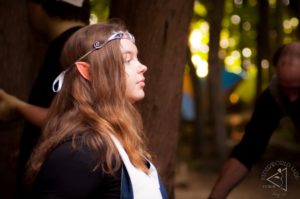 Most small High Elven villages have an informal government and judicial system, usually a small council lead by an elder, to make decisions and pass judgements. Many of these small villages don’t bother with codified laws, or even employing individuals to enforce the law professionally. Actions that are commonly seen as worthy of a trial are murder, theft, assault, keeping slaves or engaging in slave trading, necromancy (owing to the strong following of Ll’yandra and Physignathus), wytchcraft and summoning, and using magical or alchemical coercion via charm, love, enslavement. In particular, they view necromancy as the actions of an animal and not a civilized elf, and those found guilty are often ostracized from their communities.
Most small High Elven villages have an informal government and judicial system, usually a small council lead by an elder, to make decisions and pass judgements. Many of these small villages don’t bother with codified laws, or even employing individuals to enforce the law professionally. Actions that are commonly seen as worthy of a trial are murder, theft, assault, keeping slaves or engaging in slave trading, necromancy (owing to the strong following of Ll’yandra and Physignathus), wytchcraft and summoning, and using magical or alchemical coercion via charm, love, enslavement. In particular, they view necromancy as the actions of an animal and not a civilized elf, and those found guilty are often ostracized from their communities.
This mindset of a laissez-faire approach to laws and legal/political matters is common for most High Elves that are not in prominent Suvantian noble houses. In fact, the structure of Suvant’s laws and government was initially intended mostly as a means to interact politically with other kingdoms and provide safety to visitors from other nations, and less because the High Elves felt it necessary to formally govern themselves.
Over the years, as neighbouring lands changed their allegiances and rulers, and threats across the continent have increased, politics have played a more and more prominent part in High Elven culture. Despite this, the structure remains mostly the same – Suvant is ruled by a council of elders chosen from the noble houses, with Jjik’da Shalonost of House Shalonost presently acting as the council’s 13th, or Arbiter, in place of the deposed King Baraquiel.
Military
Suvant’s military is smaller than that of the human nations, but it is more specialised. Their archers and shield-bearers are good quality, but it is their battle magi who are truly world class. Most of their soldiers can cast some form of magic as well as use a weapon, but the army has a large number of exclusively magic casting soldiers. The military is trained and located in both Suvant and Day’ten. Naturally, the Suvantian navy is located in Day’ten, as Suvant is located in the sky and Day’ten is an island. Officers in the Suvantian army generally come from lesser noble houses specialising in military tactics. These noble houses are not as well respected as houses specialising in magic or artistry. The Suvantian army is famed for its bladesingers, elite soldiers trained to approach battle like a dance, wherein fluid swordplay meets dulcet spell casting.
Common Personalities & Views
High Elves are a very focused people. They typically possess a ‘holier than thou’ attitude toward many other non-Thalan races. They value the fineries of civilization such as artistic fashion and architecture, silverware, fine dining, theatre, and advancements in history, theology, geography, writing, etc. A grand example of these is the floating metropolis of Suvant. High Elves who live in the city are considered the most fortunate, compared to those who live upon the isle of Day’ten below.
High Elves of the city rarely leave Suvant. The fact that it hovers several hundred feet above the ground gives a sense of security from the dangers of the ground beneath. Though great gardens exist on Suvant to keep a spiritual connection to nature alive within the people, most High Elves of Suvant have not ventured to the actual forests below in many generations.
High Elves of Day’ten and other small community tend to be the more accepting of other racial views (but only just) compared to their city-dwelling brethren. Living amongst other races as a wise guide or observer is not an uncommon vocation. Day’tish Universities tend to value field study over text, whereas Suvantian Academies are very strict in their curriculum regarding tome usage. Both communities hold magical research in high regard.
Views on Other Races
High Elves treat other Thalan with initial kindness, regardless of their walks of life. Drael, Cindus, Crissen, Eleghast, Olagot and Deminis’Thalan all come from the Grey Elven blood that started everything, and should be given respect. Their views on other races usually centre around that race’s overall intellect and advances in civilization.
Ajaunti: “We remember when their magic pained them. Good that they are now free to explore its intricacies.”
Avians: “Almost an intellectual equal – if they could only stray away from the Shadow Plane.”
Draconians: “Wise and ancient beings.”
Einher: “Barbaric and superstitious. It is a wonder that they have survived on strength alone. Perhaps such tenacity should not be overlooked.”
Gargylen: “Regard carefully the immortal constructs. At what cost do they experience the rest of eternity?”
Gnomes: “Curious and intelligent, but irresponsible.”
Hoblings: “A playfully young creature, and yet gifted with some form of long life. They may yet advance.”
Humans: “An often tragic waste of potential. Were the young only blessed with longevity.”
Mountain Dwarves: “Gruff and lacking in the social graces… but admittedly decent craftsmen.”
Orcs: “As with all Goblinoid: dull-witted cretins with a knack for war. Disgraceful.”
Savar: “A matriarchy is interesting political structure.”
Sidhe: “Their magical prowess and knowledge bear the weight of millennia. They have earned respect.”
Wood Fae: “Frivolity can only last so long without wisdom, but their magical nature is welcome.”
Roleplaying Tips
- Try to specialize, and pursue excellence in whatever you do – High Elves expect themselves to be the very best, and will not settle for second place.
- Embrace the influence of magic when you can.
- Learn when the opportunity is afforded.
- Admire beauty and attempt to bring more of it into your surroundings.
- Live in a way that is at peace with nature.
- Provide your wisdom and opinions to those less fortunate and less gifted races, whether they ask for it or not.
- Understand the ‘hierarchy’ of races (from top to bottom):
- High Elves,
- Other elves,
- Fae, Avians and Humans,
- Dwarves and Gnomes and whatnot,
- Greenskins and whatever is left.


